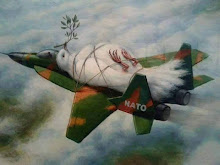Capitalism, the business model, has occupied most of our minds and souls. Many of our global communities, once oriented toward cooperation, have been reduced to dog-eat-dog competition that pits one against the other. Humanity is adrift in this system of selfish indulgence, greed, careless consumption and militarism.
How do we regain our way on this beautiful but challenged spinning satellite in space? One suggestion is that we begin to define the problem, recognize the scale of our own mental colonization, and begin the lifelong process of taking back our minds, our dignity, and our humanity.
I ran across a very important article yesterday called
Neoliberalism has brought out the worst in us: An economic system that rewards psychopathic personality traits has changed our ethics and our personalities. This brilliant and highly informative piece was written by Paul Verhaeghe, PhD, senior professor at Ghent University and chair of the department for psychoanalysis and counselling
psychology. I highly recommend reading the whole thing but here are some interesting bits from it:
- I have become convinced that economic change is having a profound effect
not only on our values but also on our personalities. Thirty years of
neoliberalism, free-market forces and privatisation have taken their
toll, as relentless pressure to achieve has become normative.
- [T]he financial crisis illustrated at a macro-social level (for example,
in the conflicts between eurozone countries) what a neoliberal
meritocracy does to people. Solidarity becomes an expensive luxury and
makes way for temporary alliances, the main preoccupation always being
to extract more profit from the situation than your competition. Social
ties with colleagues weaken, as does emotional commitment to the
enterprise or organisation.
- Bullying used to be confined to schools; now it is a common feature of the workplace.
- Our society constantly proclaims that anyone can make it if they just
try hard enough, all the while reinforcing privilege and putting
increasing pressure on its overstretched and exhausted citizens. An
increasing number of people fail, feeling humiliated, guilty and
ashamed.
- Along with the idea of the perfectible individual, the freedom we
perceive ourselves as having in the west is the greatest untruth of this
day and age.
- The sociologist Zygmunt Bauman neatly summarised the paradox of our era as: “Never have we been so free. Never have we felt so powerless.”
- Our presumed freedom is tied to one central condition: we must be successful – that is, “make” something of ourselves.
- The current economic system is bringing out the worst in us.
